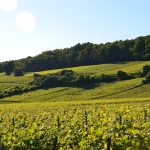By Anthony Murphy, Managing Director/Chief Winemaker, Trentham Estate, Murray Darling, New South Wales
First published in the November/December 2014 issue of the Wine & Viticulture Journal
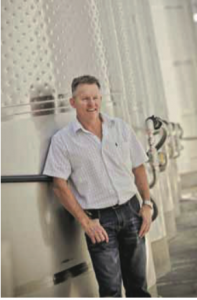
I was fortunate enough to join a tour group led by Richard Smart through the winegrape growing regions of Spain. On this trip we visited Rueda where Verdejo is the main variety grown. The vineyards were a remarkable sight, both bush and trellised vines planted in large gravel flats at around 700m above sea level. With no other vegetation on the rocky landscape it was quite hot despite the elevation.
We visited a new winery of Jose Pariente which was still being built. An impressive modern building filled with new state-of-the-art stainless steel equipment. Verdejo was their flagship variety and the winery was looking to crush 250 tonnes that coming vintage. Winemaker Victoria Pariente said they usually picked over 15-20 days aiming for 12.5 Baume with a TA of 7.0g/L and pH of 3.20. At the winery must was chilled then pressed after 8-12 hours of skin contact. Fermentation was all in stainless steel tanks. The wine would remain on lees until required for bottling.
We tasted the 2007 Jose Pariente Verdejo; the first Verdejo I had ever tried. The wine was a striking mix of tropical fruit and herbaceous flavours, good acid and more body and structure than I expected. Trentham Estate has long been growing and making alternative variety wines. Our current releases include Pinot Grigio, Vermentino, Taminga, Nebbiolo and Lambrusco Maestri, so tasting the Verdejo was of great interest.
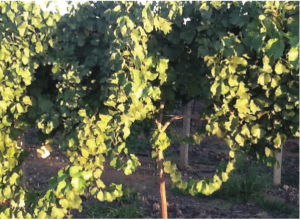
Two years later, by chance, I was contacted by Paul Croxton from Boulevarde Nurseries in Irymple asking whether we’d be interested in planting Verdejo. The nursery had brought in Verdejo cuttings from Spain and they had been released after two years in quarantine. Boulevarde Nurseries used plant tissue culture to rapidly propagate the Verdejo vines.
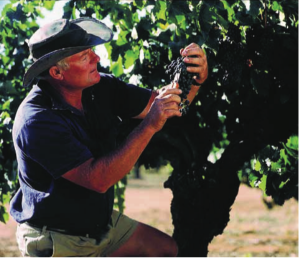
Coincidently the call came around the time of the announcement that Australia’s Albarino plantings weren’t actually Albarino. We had good success with our first and only release – 2008 Estate Albarino. Sales were going well, we’d almost sold out of the 2008 and we were preparing the 2009 for bottling. We decided not to release a Savagnin and looked to Verdejo.
In December 2010 we planted 0.6 hectares of Verdejo; clone 77 on own roots just across the road from the winery. Vines were planted in an east-west facing direction, 1.83m apart with a row spacing of 3.35m. They are trained on a two-wire vertical trellis and spur pruned to two buds. The vines have medium to high vigour and produce quite loose medium-sized bunches with medium-sized berries. The vines are irrigated with under-vine sprinklers.
Our first pick totalled 6.5 tonnes on 12 February 2013. The fruit was machine picked in the early morning into 2.5-tonne bins with 100mg/L PMS and delivered to the winery within minutes of being harvested. The juice was handled reductively, free run and pressings fined separately, then combined after cold settling. A pre-ferment juice analysis showed 12.2 Baume, pH3.69, 4.9g/L TA and 106NTU. 2g/L of tartaric acid was added before seeding with a commercial S.cerevisiae yeast strain. Fermentation took place at between 12-17oC to dryness.
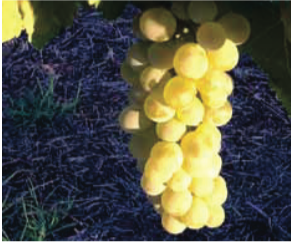
The wine remained on yeast lees until stabilising and clarifying just prior to bottling in early June 2013. At the time of release, we were the only Australian Verdejo commercially available. The wine has distinctive flavours, a mixture of fresh stone fruit and tropical fruit flavours with some grassy and cut hay notes. Despite being 12% alcohol the palate is full and soft. You could say it looks like a cross between an unoaked Chardonnay and Sauvignon Blanc. The 2013 Verdejo has received five trophies including the Best Spanish Variety and Best Murray Darling Wine at the 2013 Australian Alternative Varieties Wine Show.
This year we picked 11 tonnes on 12 February at 12.1 Baume, the same picking date and Baume to 2013. We experienced a heatwave from 13-17 January with temperatures between 40 and 45oC. The vines handled the heat well, and we had no sunburn on the fruit. The juice was a little fuller with more colour and phenolics than 2013 and we chose not to include any pressings in the 2014 wine. The wine was bottled in mid-June and is consistent in flavour and body to the 2013.
We are happy with our style of Verdejo and it sits well in our Estate range, offering a wine lighter in style to our Chardonnay and Pinot Gris, and fresh yet more complex and fuller than our Sauvignon Blanc. As long as sales continue to do well it’s here to stay.
Verdejo

By Peter Dry, Emeritus Fellow, The Australian Wine Research Institute
Background
Verdejo (ver-DAY-ho or ver-DECK-ho ) originated in Castilla y Léon, Spain. The name refers to the green colour of the berries. Traditionally it was mainly restricted to the Rueda region where it was used for a sherry-style wine. Changes in winemaking practice to reduce oxidation and picking at night has allowed fine table wines to be produced from this variety since the 1970s, resulting in a significant expansion in plantings; for example, from 4453 ha in 2000 to 16578 ha in 2010. Today it is the fifth most-important white variety in Spain, mainly grown in Castilla y Léon with smaller areas in Castilla-La Mancha and Extremadura. DNA profiling indicates that Albillo de Nava (grown in Rueda) is identical to Verdejo (but not related to either Albillo Mayor or Albillo Real) and that Godello (Gouveio) is a sibling. It is not related to either Verdejo Negro (syn. Verdejo Tinto) or Verdejo Colorado (syn. Pedral). Also, a previously reported relationship with Damaschino (syn. Planta Fina) has been recently disproved. Other synonyms include Boton de Gallo Blanco and Verdeja. Outside of Spain it is almost non-existent with tiny areas in both USA and Australia—in the latter there are currently at least 5 wine producers, in SA, Vic. and NSW.
Viticulture
Budburst is mid-season and maturity is early to mid-season. Vigour is low and yield is moderate. Maximum permitted yield in Rueda is 10 t/ha for trellised vines. Bunches are small to medium and compact with small to medium thin-skinned berries with a distinctive blue-green bloom. Tolerance of drought and heat is good but it is very susceptible to powdery mildew. Pruning is generally to canes or long spurs due to low to medium bud fertility. Clonal selection in Spain has shown variation between clones—but at the present time there may be only a single clone in Australia.
Wine
Wines in Spain are medium to full-bodied with good acidity and very aromatic with notes of laurel and bitter almond. It is used as a single variety or blended, most commonly with Sauvignon Blanc.
